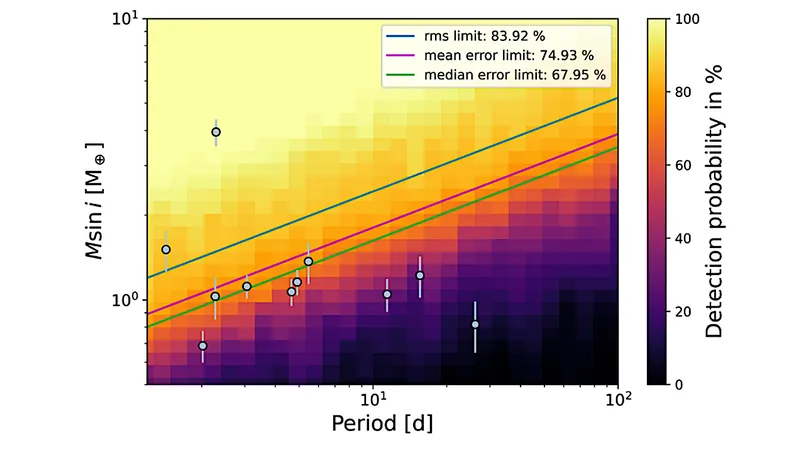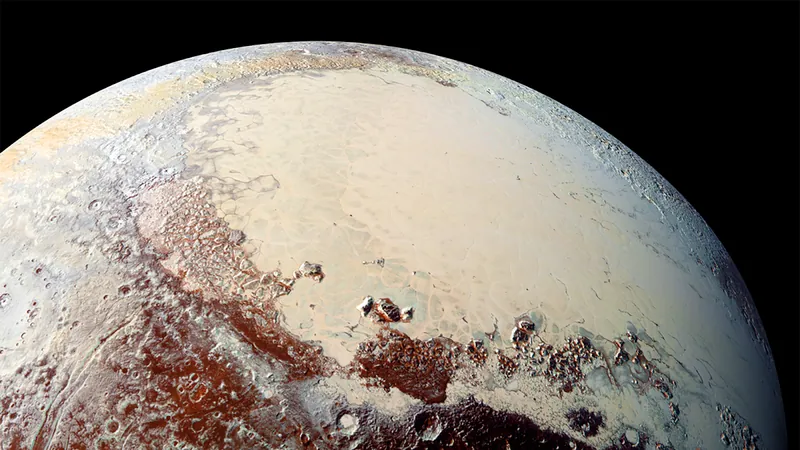
Unveiling Earth-Like Planets: A Treasure Trove Around Low-Mass Stars!
2025-07-01
Author: Siti
Breaking Ground in Exoplanet Discovery
Recent groundbreaking research led by astronomers from Heidelberg University reveals that Earth-like planets are surprisingly common around low-mass stars! This astonishing revelation stems from data analyzed in the CARMENES project, which has successfully identified four new exoplanets and unveiled their intriguing characteristics.
The Cosmic Neighbors We’ve Been Waiting For
The researchers made a striking discovery: stars with less than one-sixth the mass of our Sun frequently host planets that could potentially sustain life! This discovery could dramatically shift the trajectory of how we search for habitable worlds in our universe.
Cutting-Edge Technology Illuminates the Cosmos
Central to these findings is the CARMENES spectrograph system, housed at the Calar Alto Observatory in Spain. This advanced technology, developed by the experts at Heidelberg University, allows astronomers to detect minute wobbles in M-dwarfs—stars that are the galaxy’s most populous yet often overlooked due to their small size.
Unveiling New Worlds in the M-Dwarf Goldmine
In this study, scientists meticulously examined 15 M-dwarfs from a catalog of 2,200 within the CARMENES program. They focused on tracking the radial velocity of these stars, using high-resolution spectrometry to identify the new planets. Among their findings was a gigantic planet weighing a staggering 14 times more than Earth, which completes its orbit in roughly 3.3 years.
A New Era of Habitability Research
The statistics are equally compelling. Stars with masses under 0.16 times that of the Sun typically boast about two planets each with less than three Earth masses. Dr. Adrian Kaminski, the study's lead, underscores how common small planets are in these stellar systems, hinting at a tendency for low-mass stars to create smaller, closely orbiting planets.
A Paradise for Potential Life
While over 5,000 planets have been discovered in various solar systems, none truly parallels Earth in terms of mass, radius, and surface temperature. However, the newcomers to the cosmic roster meet key criteria for habitability. Prof. Dr. Andreas Quirrenbach from the Königstuhl Observatory notes that these small rocky planets lie within the habitable zone—the coveted area where liquid water might exist, making them prime candidates for harboring life.
Collaborative Science Across Borders
This major research effort saw contributions from astronomers in Bulgaria, Germany, India, Norway, Spain, and the USA, showcasing a collaborative drive in the scientific community. Funded by entities such as the Spanish Ministry of Science and the European Union, the study's findings are a major leap forward in our quest for extraterrestrial life, published in the prestigious journal 'Astronomy & Astrophysics.'
The Future of Cosmic Exploration
As we set our sights on these newly discovered planets, the implications for astrobiology and the search for life beyond Earth are profound. M-dwarfs, with their stable energy emissions over billions of years, may become our cosmic neighbors in the quest for life. Get ready, as this research could redefine our understanding of where life could flourish in the universe!


 Brasil (PT)
Brasil (PT)
 Canada (EN)
Canada (EN)
 Chile (ES)
Chile (ES)
 Česko (CS)
Česko (CS)
 대한민국 (KO)
대한민국 (KO)
 España (ES)
España (ES)
 France (FR)
France (FR)
 Hong Kong (EN)
Hong Kong (EN)
 Italia (IT)
Italia (IT)
 日本 (JA)
日本 (JA)
 Magyarország (HU)
Magyarország (HU)
 Norge (NO)
Norge (NO)
 Polska (PL)
Polska (PL)
 Schweiz (DE)
Schweiz (DE)
 Singapore (EN)
Singapore (EN)
 Sverige (SV)
Sverige (SV)
 Suomi (FI)
Suomi (FI)
 Türkiye (TR)
Türkiye (TR)
 الإمارات العربية المتحدة (AR)
الإمارات العربية المتحدة (AR)